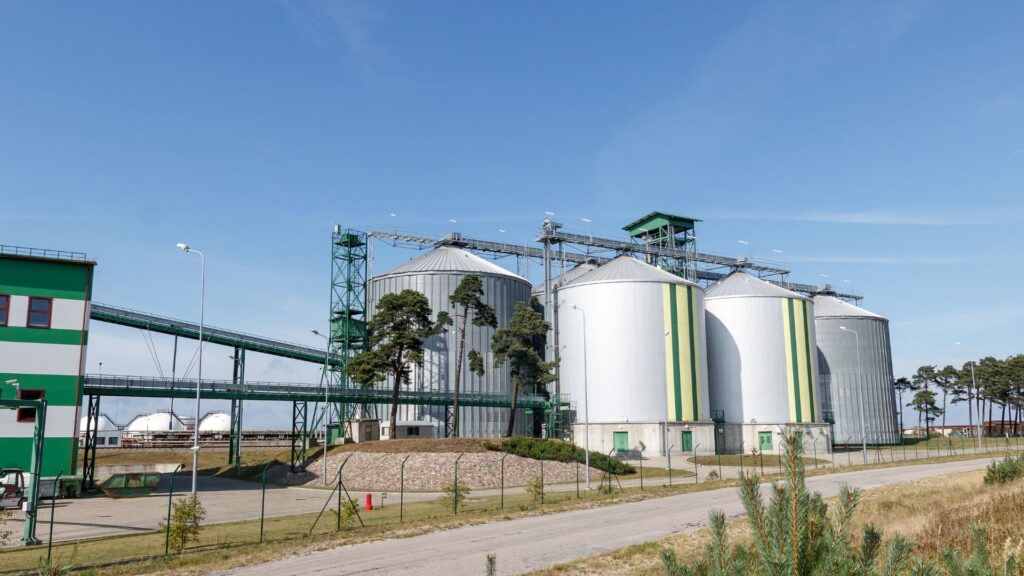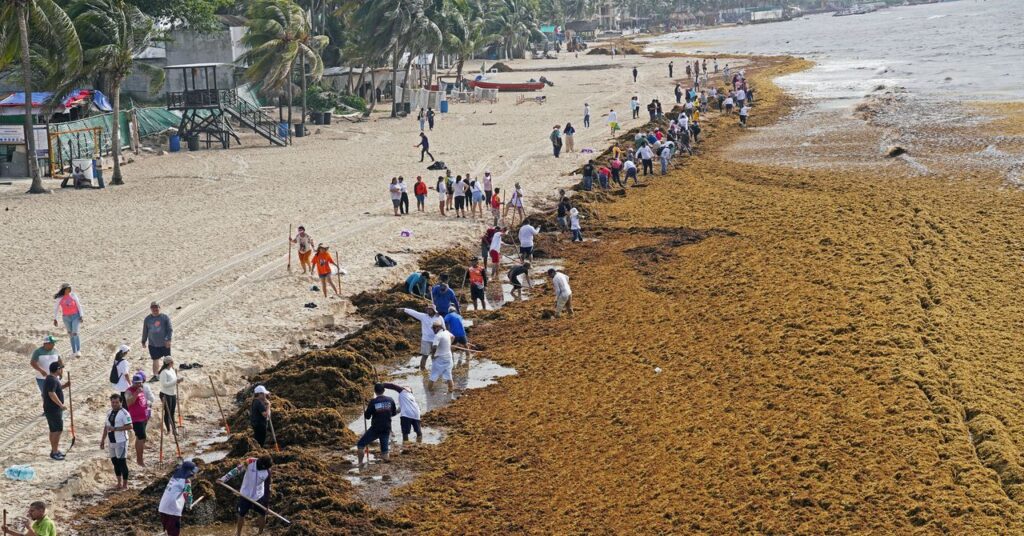
Mexico’s beaches are facing a significant influx of seaweed, prompting experts to suggest converting it into biogas and building materials while also exploring its potential to support carbon credits. Popular tourist destinations like Cancun, Cozumel, and Tulum have been grappling with the invasion of sargassum for the past 15 years, disrupting the idyllic image of sun, sand, and clear waters typically associated with the Caribbean summer season.
Projections indicate that this summer could witness a record-breaking 400,000 tons of sargassum washing ashore on Mexican coasts, posing both aesthetic and environmental challenges. The decomposition of this seaweed releases harmful gases such as hydrogen sulfide, methane, and carbon dioxide, contributing to air pollution and impacting local economies.
Various factors like rising ocean temperatures, agricultural runoff, and shifts in ocean currents are believed to be driving the proliferation of sargassum, although the exact cause remains a subject of debate. To address the issue at hand, experts like Miguel Ángel Aké Madera advocate for harnessing sargassum as a valuable resource by transforming it into biofuel to mitigate its negative effects.
Innovative solutions such as Sargapanel—a construction material developed by researchers at UNAM—offer promising alternatives by utilizing wet sargassum to create durable panels that not only outperform traditional materials but also contribute to reducing carbon emissions. The potential economic benefits are substantial, with estimates suggesting significant profits from carbon credits and CO2 absorption through the utilization of sargassum in sustainable products.
Efforts are underway to establish a comprehensive approach towards managing sargassum through initiatives like the Sargasso Comprehensive Sanitation and Circular Economy Center in Quintana Roo. By promoting the conversion of sargassum into biogas and organic fertilizers, these endeavors aim to transform what was once seen as a nuisance into a valuable asset that aligns with environmental conservation goals.
Looking ahead, the sustainable utilization of sargassum presents opportunities not only for energy generation but also for fostering innovation in waste management practices. By embracing the potential of this natural resource and exploring diverse applications across industries, Mexico can pave the way for a greener future while addressing the challenges posed by excessive seaweed accumulation along its shores.
